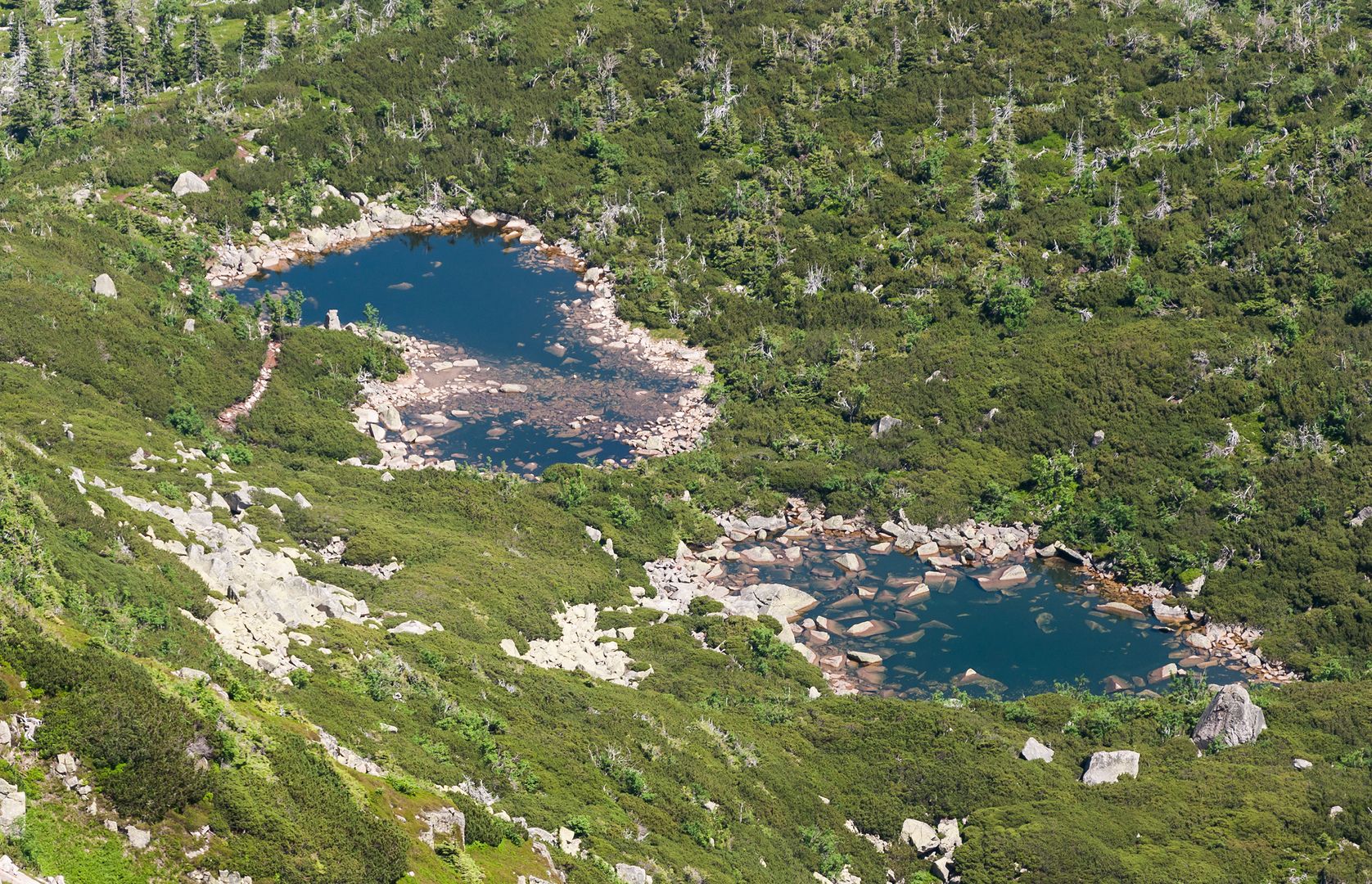Snowy Cauldrons
7.31

Overview
Snowy Basins (Śnieżne Kotły), located in the western part of the Karkonosze Mountains, are unique post-glacial cirques situated between Wielki Szyszak and Łabski Szczyt, entirely formed of Karkonosze granite. Their interior features late Oligocene basalt, with unique endemically growing plant species such as snow saxifrage and alpine woodsia, making them an example of an alpine landscape. The region also boasts rich fauna, including rare arctic snails and alpine accentors. Snowy Basins were a site of climatological activity between 1881 and 1930, with recorded extreme temperatures and precipitation. Additionally, the area is distinguished by unusual moraines formed during the Pleistocene, with their highest forms reaching up to 15 meters in height. During the summer, post-glacial ponds, known as Snowy Ponds (Śnieżne Stawki), appear in the valleys. In terms of infrastructure, a radio and television relay station is located at the edge of the basins, and a green hiking trail runs through them, often closed in winter due to avalanche risk. Historically, in 1837, Count Schaffgotsch established the first tourist shelter, which contributed to the development of tourism in the region. It operated until 1961 when the relay station took over its role. In 1933, Snowy Basins gained the status of a nature reserve, and after the establishment of the Karkonosze National Park, they became part of the strict protection zone, safeguarding their unique geological, natural, and landscape values. Besides its natural beauty, the region offers panoramic views of the Karkonosze Mountains, the Izera Mountains, and, in good weather, even Ślęża Mountain can be spotted.
Location
2025 Wizytor | All Rights Reserved